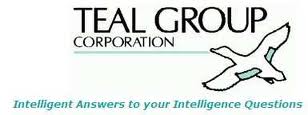
04 April 2018

Russia has a broad range of strategic missile programs in an attempt to make up for the “lost decade” from 1992 to 2004 when there was a procurement holiday due to lack of funding. The Russian strategic missile force is becoming increasingly aged, especially the Topol ICBM missiles which probably had a shelf life of only 10 years when manufactured back in the 1980s. The Topol-M and Yars programs are aimed at replacing this force, while at the same time, the new Sarmat heavy ICBM program has been initiated to eventually replace the liquid-fuel 15A18/SS-18 force. In general, Russian defense programs have suffered a drop in funding over the past several years due to the declining defense budget, and there have been commensurate slow-downs in most of the programs.
The Russian navy’s SLBM force has suffered from a serious decline. The most modern SLBM, the R-39 (SS-N-20) has been retired due to age-induced deterioration of its solid fuel engines and loss of its manufacturing base in Ukraine. At the moment, a two phase effort is underway to manufacture the new Bulava missile for the new Borey class of SSBN, and to modernize the R-29R (SS-N18) on the Delfin class with the Layner. The Layner will probably be a re-build program rather than new construction, and so is not listed on the forecast below.
The air force’s strategic bomber force had its weapons programs brought to a close in 1992 by the Yeltsin government’s decision to end cruise missile production. This restriction may not have made much difference anyway in view of the lack of funding. The Kh-101/Kh-102 program has been revived and plans were underway to begin production in 2013. A new hypersonic ALCM is apparently in development, though details are too scant to determine whether it is a strategic nucleararmed missile, or an air-to-surface missile for conventional missions. As a result, no forecast is presented here.
The Russian defense industry is organized in a fundamentally different fashion than in the West with the design bureaus existing separate from the production plants. The forecasts here are listed in the traditional fashion by the design bureaus. Although Bulava is a joint MIT/Makeyev project, it is credited here to MIT which is the lead organization.
Sarmat ICBM (SS-X-30)
The development of a new generation heavy ICBM to replace the old 15A18M (SS-18 Satan) began with a design study codenamed “NIR Argumentatsiya” at NPO Mashinostroyenie in 2007 that studied the possibility of designing a weapon on the basis of existing submarine-launched ballistic missile. The study proposed the use of the liquid fuel engines from the R-29RMU2 (SS-N-23 Skiff) and the warhead package of the failed R-39UTTKh Bark (SSNX-28).
A Russian press interview with the commander of the RSVN Strategic Missile Force, Gen. N. Solovtsov indicated that work began in June 2009 on a liquid-fuel heavy ICBM to replace the older heavy ICBMs at NPO Mashinostroenie in Reutov cooperating with the Makeyev bureau in Miass. The guidance system was assigned to NPTsAP (Pilyugin center) in Moscow. The program began under OKR Sarmat (Sarmatian Experimental Design Study) and a preliminary design was approved in October 2012. According to Russian officials, the first pop-up test out of a test silo would be conducted by the end of 2015; reports in late 2015 put the first tests from Plesetsk in mid2016. The aim was to complete design by 2016-18, though other sources indicated initial production in the 2022 time frame.
In 2017, it was reported that the program had fallen behind schedule. The initial ejection test of the missile took place in December 2017 and as many as two more ejection tests were scheduled for 2018.
The launch complex for Sarmat is designated as 15P228, the missile as 15A28.
Commentaires